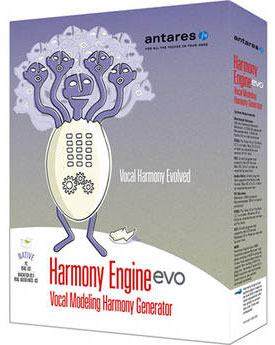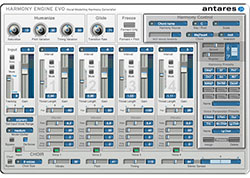 I talk a LOT about harmony singing. My search for a way to 3-part harmony with my friends when I was in high-school and failing – (not all my friends were in choir) due to the fact that a lot of people who CAN sing, still cannot sing harmony, is arguably the reason that I discovered multi-track recording in the first place!
I talk a LOT about harmony singing. My search for a way to 3-part harmony with my friends when I was in high-school and failing – (not all my friends were in choir) due to the fact that a lot of people who CAN sing, still cannot sing harmony, is arguably the reason that I discovered multi-track recording in the first place!
If my friends couldn’t sing those other parts, maybe I could sing them with myself somehow. And ultimately I discovered how to do just that. My first article for Home Brew Audio was, in fact, Sing Harmony With Yourself – Learn How to Record Your Voice on Your PC and Sing Along With It! Check out a bunch of audio of how it sounds here: Vocal Harmony Experiments
Recording All The Harmonies With Actual Voices (Even All Your Own)
The way I always have done it (singing harmony with myself) has been to sing one part – say, the melody – and record it. Then play that recording back while singing one harmony part along with it. Then I rinse and repeat to get as many harmonies as possible recorded. These days it is easy to do and have it sound awesome.
In the early days I had to use cassette tapes and bounce them from one machine to another (truly old-school like Les Paul and Mary Ford!). The hiss was terrible. But nowadays, you just open a track in some multi-track recording software like Audacity or Reaper, and you can have as many tracks – one for each vocal part – as you want. And each one is clean with no additive hiss like in the old days.
Using Technology To Generate The Harmonies From One Voice
This worked fine for recording. But for solo live performance, not so much. In the 90s I discovered hardware harmonizers, machines that would split your vocal into parts for you. If you didn’t have band members who could sing harmony, that was the only way to go. The machine I used was called the TC-Helicon VoiceLive. It could do some amazing things, but is was fairly complex too. It’s discontinued, but you can see the info on it if you follow that link.

Anyway, nowadays there is software that can basically do the same thing as the old Vocalist Workstation, which represents an alternative way to sing harmony with yourself and record it. Some people prefer using harmonizer software over simply singing all the parts. If you have trouble figuring out harmony parts, this can be awesome.
Once you learn how to use it, the software method can definitely be faster. One of the more popular harmonizer programs out there comes from Antares Audio, the same company that makes Auto-Tune. It’s called Harmonizer Engine EVO. It generates harmonies and gives you control of several things such as a humanizer to make the harmonies sound more natural, creating your own harmony parts, etc.
In our latest course – Harmony Recording Awesomeness – you get two lessons showing you how to create 3 and 4-part harmony with Harmony Engine Evo, as well as how to figure out harmony parts! Below is one of the videos from the course:
http://homebrewaudio.wistia.com/medias/9vje3hd6rr?embedType=async&videoFoam=true&videoWidth=700
Personally, I like singing all the parts myself, but for something different in your harmony arsenal, or a completely different way of singing harmony with yourself, you should check this out. To get more detailed information and/or buy Harmony Engine EVO, CLICK HERE.

hi,
does it have a MIDI follow function?
is there a trial version?
I don’t know the answer to that. Check with Sweetwater here: https://www.sweetwater.com/store/detail/HarmonyEngEvo-e–antares-harmony-engine-evo They have excellent support and you can ask them.